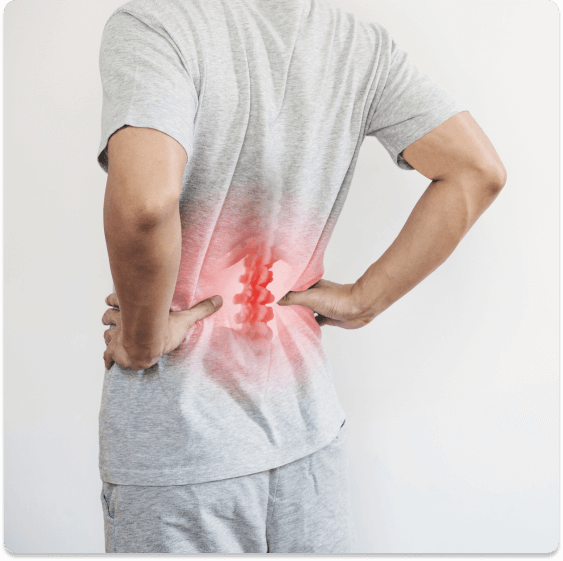We’re pleased to announce that Pain Physicians of Wisconsin is now Pro Spine Pain.
We’re pleased to announce that Pain Physicians of Wisconsin is now Pro Spine Pain.

Lumbar spondylosis is a common degenerative condition that affects the lower spine. It’s often referred to as spinal osteoarthritis and is characterized by the wearing away of the disc and other spinal structures. This degeneration, often resulting from age or repetitive strain, can cause back pain, stiffness, and reduced flexibility.
It’s important to be aware of the symptoms associated with lumbar spondylosis. In some individuals, this condition may remain asymptomatic for years, only to surface when triggered by an injury or stress. Common symptoms include:
Primarily an age-related condition, lumbar spondylosis is most common in adults over 60. However, other factors can also increase the risk:
At Pro Spine & Pain, our skilled doctors use various diagnostic tools to identify lumbar spondylosis. We start with a detailed medical history and physical examination, followed by imaging tests like X-rays, MRI, or CT scans. These procedures help us determine the extent of your spinal degeneration and plan a suitable treatment strategy.
Our team of experts specialises in interventional pain management, a dynamic field that uses minimally invasive techniques to identify and treat pain at its source. This can be particularly effective for managing the discomfort associated with lumbar spondylosis. Here’s what you can expect:
Living with lumbar spondylosis can be challenging, but making certain lifestyle changes can help manage symptoms and prevent further damage. Regular physical exercise can strengthen your back and core muscles while maintaining a healthy weight can reduce pressure on your spine. Maintaining good posture and taking regular breaks from prolonged sitting can also be beneficial.
At Pro Spine & Pain, we believe in a world where chronic pain does not dictate your quality of life. Lumbar spondylosis can be debilitating, but with our expert guidance and innovative interventional pain management techniques, you can regain control of your life. Schedule an appointment with us today; together, we can navigate your path to relief.